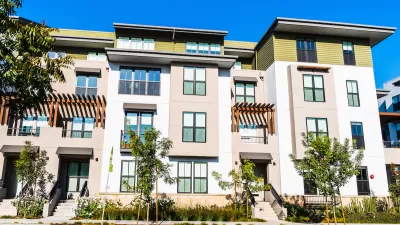Between 2016 and 2021, the share of American tenants renting apartments and homes alone grew, with the fastest growth in Salt Lake City.

According to an article by Veronica Grecu on RentCafe, the number of solo renters in the United States is on the rise.
“Between 2016 and 2021, renters living alone gained about 1 million people, reaching 16.7 million (up 6.7%). That’s the fastest-rising renter group during those five years, having accelerated significantly during 2020,” the article notes.
Among these, Baby Boomers and Millennials make up the largest share, with Gen Z renters lagging behind due to high housing costs. “To rent an apartment alone, a renter needs an extra annual income of $8,600 compared to the average renter.”
Of U.S. cities, Salt Lake City saw the highest rise in solo renters during this time period, while Philadelphia and Indianapolis have the highest raw numbers of renters living alone. The most affordable places to rent alone are Akron and other Ohio cities.
“On the other hand, renters living with roommates saw a different pattern: They peaked at 6.3 million in 2019, and only partially bounced back to 5.8 million after the pandemic. Meanwhile, people living with family in rented apartments dropped from 71.3 million in 2016 to 68.1 million in 2021.” Millennials remain the dominant renter age group—29.5 percent—despite the fact that a majority of that generation are now homeowners.
FULL STORY: 16.7 Million Americans Are Renting Alone; Salt Lake City Saw the Highest Surge

Planetizen Federal Action Tracker
A weekly monitor of how Trump’s orders and actions are impacting planners and planning in America.

Congressman Proposes Bill to Rename DC Metro “Trump Train”
The Make Autorail Great Again Act would withhold federal funding to the system until the Washington Metropolitan Area Transit Authority (WMATA), rebrands as the Washington Metropolitan Authority for Greater Access (WMAGA).

The Simple Legislative Tool Transforming Vacant Downtowns
In California, Michigan and Georgia, an easy win is bringing dollars — and delight — back to city centers.

The States Losing Rural Delivery Rooms at an Alarming Pace
In some states, as few as 9% of rural hospitals still deliver babies. As a result, rising pre-term births, no adequate pre-term care and "harrowing" close calls are a growing reality.

The Small South Asian Republic Going all in on EVs
Thanks to one simple policy change less than five years ago, 65% of new cars in this Himalayan country are now electric.

DC Backpedals on Bike Lane Protection, Swaps Barriers for Paint
Citing aesthetic concerns, the city is removing the concrete barriers and flexposts that once separated Arizona Avenue cyclists from motor vehicles.
Urban Design for Planners 1: Software Tools
This six-course series explores essential urban design concepts using open source software and equips planners with the tools they need to participate fully in the urban design process.
Planning for Universal Design
Learn the tools for implementing Universal Design in planning regulations.
Smith Gee Studio
City of Charlotte
City of Camden Redevelopment Agency
City of Astoria
Transportation Research & Education Center (TREC) at Portland State University
US High Speed Rail Association
City of Camden Redevelopment Agency
Municipality of Princeton (NJ)





























